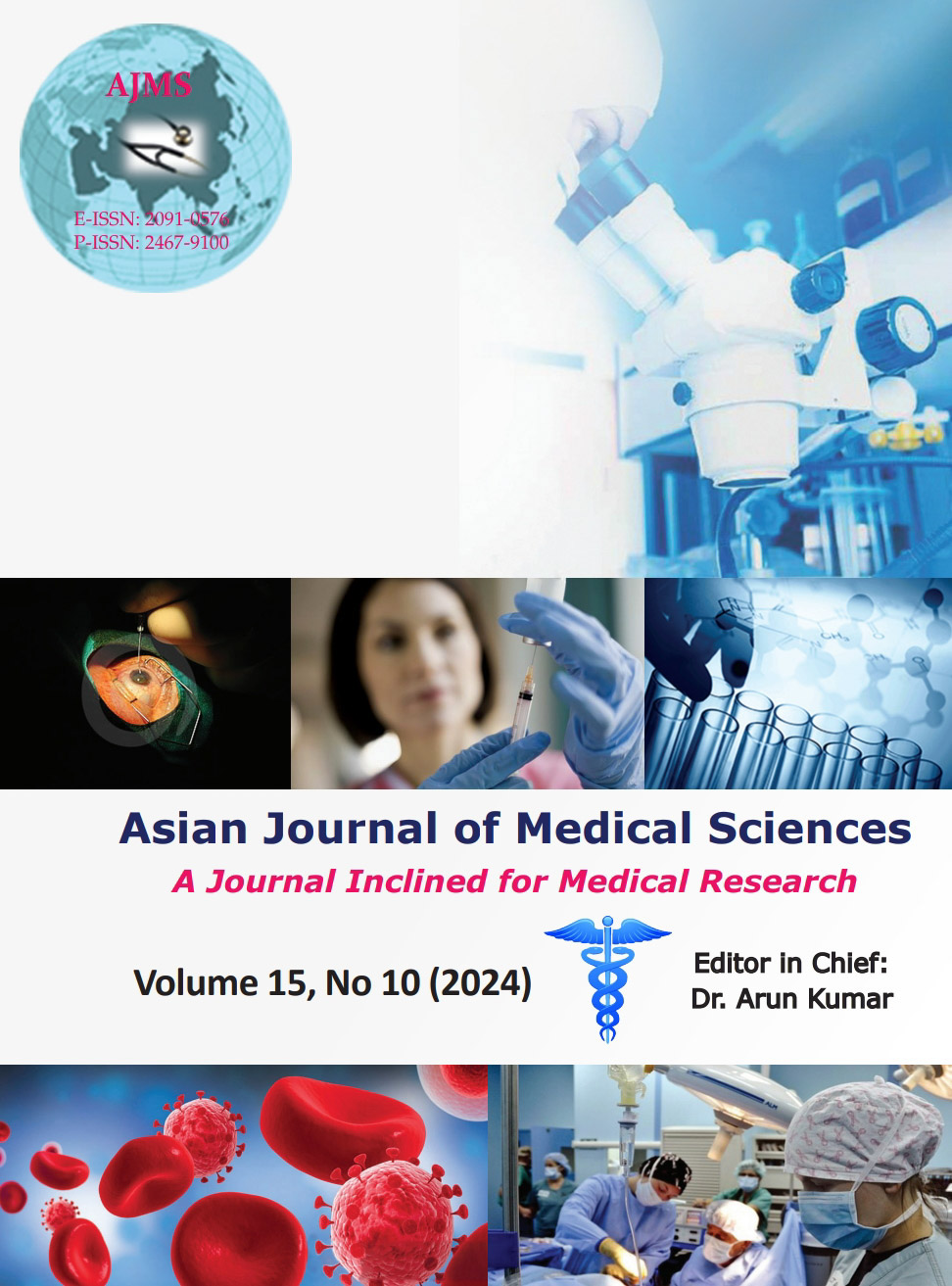Clinical assessment of ectopic pregnancy in a tertiary care hospital: An observational study
Keywords:
Ectopic pregnancy; Risk factors; Presenting complaints; Early diagnosis; Management modalities; Prevent morbidity and mortalityAbstract
Background: Ectopic pregnancy is defined as pregnancy that occurs outside normal uterine cavity that occurs due to implantation of fertilized ovum in an aberrant site which is conducive to its growth and development. In developing countries like India, late presentations with tubal rupture and hemodynamic instability, late presentations with tubal rupture causes first trimester maternal morbidity and mortality. For early diagnosis, a clinician should be well aware about the various presentations of ectopic pregnancy.
Aims and Objectives: (a) To estimate the incidence, risk factors, clinical manifestations and outcome following different management protocol. (b) To estimate the morbidity and mortality with respect to different types of presentation and management. (c) To understand the need for clinical assessment in order to diagnose early and provide urgent intervention and also to lean toward the possibility of conservative approach in order to preserve fertility.
Materials and Methods: The current study was a time bound, Observational descriptive study with Longitudinal design. It was conducted in the Department of Obstetrics and Gynecology, R. G. Kar Medical College and Hospital, between March 2021 and August 2022. One hundred and thirty-eight participants, suspected to have ectopic pregnancy were enrolled for the study. Data collection was done by detailed history taking and physical examination. The basic investigations including hemoglobin, ABO and Rhesus typing, urine pregnancy test, and ultrasound (USG) examination were done. All data were collected on a structural data form and analyzed for descriptive statistics. Post-operative histopathological examination (HPE) reports were collected and final diagnosis was made.
Results: About 63.8% of the study population belonged to 21–30 years of age. About 63.7% patients presented with >5–8 weeks of amenorrhea. About 18.1% of the study population were sterilized and the duration between the sterilization and the occurrence of ectopic was 4–10 years in 64% patients. The most common risk factor was h/o Previous C-section (31.8%). The most common clinical symptom was abdominal pain present in 131 (94.9%), 44 (31.9%) participants had all the three classical symptoms with 100% specificity. On examination, forniceal fullness/tenderness was the most specific finding. The most common USG finding was Adnexal mass with empty Uterine cavity with Free fluid (49.2%). Most of the patients were managed with Partial Salpingectomy (30.4%). The final diagnosis of ectopic was made in 129 patients, which was confirmed by HPE reports in 124 patients. Five patients underwent medical treatment.
Conclusion: Early diagnosis before rupture and referral are the key factor in reducing the maternal morbidity and mortality.
Downloads
Downloads
Published
How to Cite
Issue
Section
License
Copyright (c) 2024 Asian Journal of Medical Sciences

This work is licensed under a Creative Commons Attribution-NonCommercial 4.0 International License.
Authors who publish with this journal agree to the following terms:
- The journal holds copyright and publishes the work under a Creative Commons CC-BY-NC license that permits use, distribution and reprduction in any medium, provided the original work is properly cited and is not used for commercial purposes. The journal should be recognised as the original publisher of this work.
- Authors are able to enter into separate, additional contractual arrangements for the non-exclusive distribution of the journal's published version of the work (e.g., post it to an institutional repository or publish it in a book), with an acknowledgement of its initial publication in this journal.
- Authors are permitted and encouraged to post their work online (e.g., in institutional repositories or on their website) prior to and during the submission process, as it can lead to productive exchanges, as well as earlier and greater citation of published work (See The Effect of Open Access).




